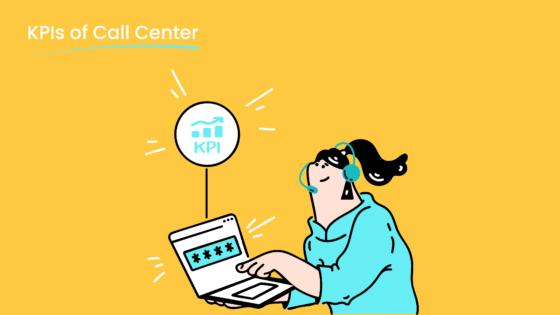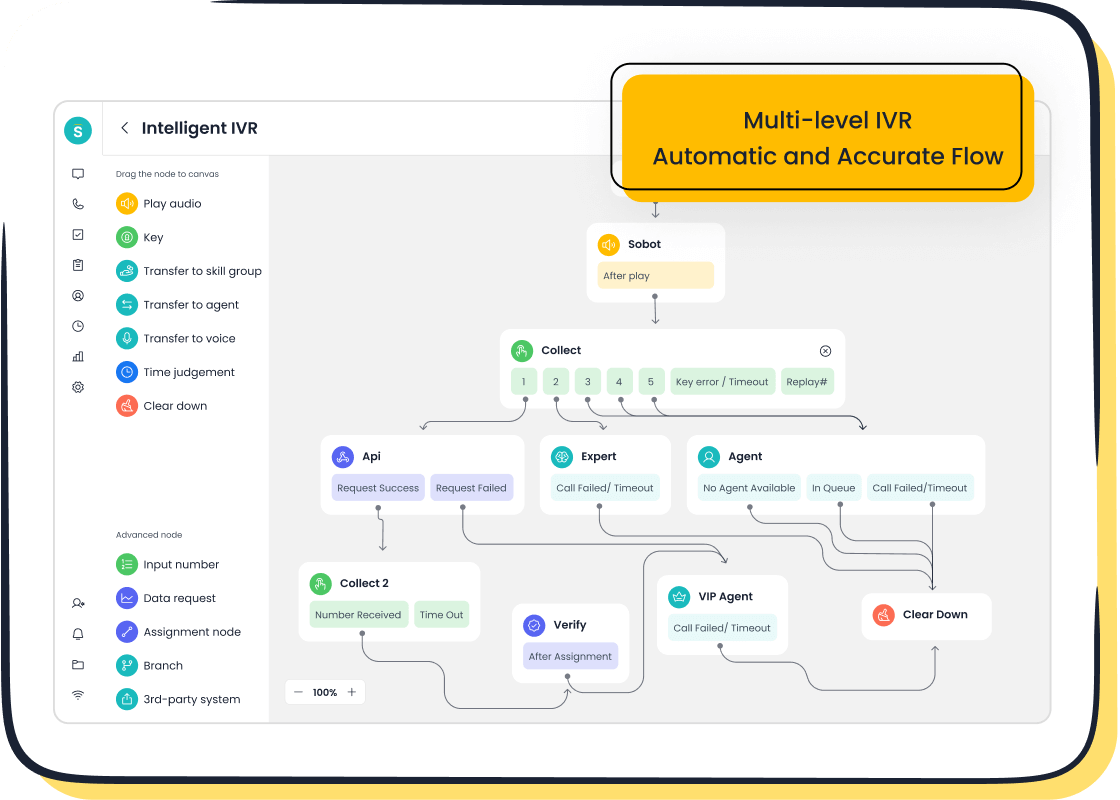In-House or Outsourced Call Center How to Decide

Deciding how to choose a call center starts with understanding what matters most for each business. Some companies prefer in-house teams for better control, brand experience, and data security. Others select outsourcing for lower costs and easier staff management. The table below shows common reasons for each choice:
| Reason Category | In-House Call Centers | Outsourced Call Centers |
|---|---|---|
| Control & Personalization | High | Low |
| Cost | High | Low |
| Service Availability | Limited | 24/7 Possible |
Sobot helps businesses make this decision with Sobot AI and Sobot call center solutions that fit different needs.
Quick Answer
How to Choose a Call Center
Businesses often ask how to choose a call center that matches their needs. The decision depends on several core criteria. Companies must weigh cost, control, and scalability before making a choice. The table below summarizes the top three criteria that guide most decisions:
| Criterion | In-House Call Centers | Outsourced Call Centers |
|---|---|---|
| Cost and Budget | Higher costs due to training and space requirements | Often more cost-efficient due to lower labor costs |
| Control and Brand Knowledge | Greater control and direct oversight; deeper brand/product knowledge | Less control; agents require training and may lack brand familiarity |
| Scalability and Flexibility | Scaling is slower and more effortful | More flexible and scalable to handle fluctuating volumes and growth |
When considering how to choose a call center, companies should start by identifying their main priorities. Some organizations value direct oversight and brand consistency. Others need to manage costs or scale quickly during busy seasons. For example, a retail business with seasonal spikes may benefit from outsourcing, while a financial services firm may prefer in-house teams for tighter control.
Key Factors
Several influential factors affect how to choose a call center. These include:
- Business size and call volume
- Cost efficiency and budget constraints
- Level of control over customer interactions
- Flexibility to scale up or down
- Access to specialized expertise and technology
- Quality control and customer satisfaction
- Integration with existing business operations
- Cultural alignment with the brand
Industry benchmarks help companies measure success after they decide how to choose a call center. Key performance indicators (KPIs) such as First Call Resolution (FCR), Average Handle Time (AHT), Customer Satisfaction (CSAT), and Net Promoter Score (NPS) provide valuable insights. For instance, a high FCR rate (benchmark: 85%) and low abandonment rate (benchmark: 5%) signal strong performance.
Tip: Companies should review these KPIs regularly to ensure their call center model delivers the desired results.
Understanding how to choose a call center involves balancing these factors with business goals. Each company must decide which criteria matter most for their unique situation.
In-House Call Center

What Is an In-House Support Team
An in-house support team operates within the company, managing all customer interactions directly. These teams work from company-owned facilities and use internal resources to handle customer inquiries, complaints, and support requests. In-house call centers often follow a pyramid-like hierarchy. At the top, executives oversee strategy, budgets, and performance. Managers handle daily operations, team rosters, and process improvements. Team leaders supervise agents, monitor performance, and manage schedules. Agents form the base, responding to calls, emails, and messages across channels.
| Role | Description |
|---|---|
| Executives | Lead call center strategy, plan budgets, and oversee KPIs. |
| Managers | Manage operations, targets, and team performance. |
| Team Leaders | Supervise agents, handle scheduling, and monitor quality. |
| Agents | Respond to customer contacts via phone, email, and social media. |
The structure of in-house contact centers can vary. Inbound centers often require more agents and deeper hierarchies to manage complex issues. Outbound centers may use smaller, flexible teams. Some industries need both generalist and specialist agents, which shapes the team’s organization.
Pros and Cons
In-house call centers offer several advantages. Companies gain complete control over operations, training, and quality assurance. They can train agents as brand ambassadors, ensuring strong brand alignment and personalized service. Immediate feedback loops allow for quick policy changes and faster problem resolution. Integration with company systems and data is seamless, which helps the customer service team deliver consistent experiences. Enhanced information security is another benefit, as sensitive data stays within the organization.
However, in-house contact centers also present challenges. High operational costs arise from infrastructure, technology, and ongoing training. Management and HR teams face extra workload, including recruitment, payroll, and benefits. Limited support hours can lead to customer dissatisfaction outside business hours. Scaling up quickly during peak times is difficult, as hiring and training new agents takes time. Continuous investment in technology and expertise is necessary to stay competitive.
| Advantages | Disadvantages |
|---|---|
| Complete control over procedures | High costs for infrastructure and technology |
| Brand-aligned training and personalization | Ongoing management and HR demands |
| Fast policy implementation | Limited support hours |
| Valuable customer insights | Scalability challenges |
| Seamless integration with company resources | Need for continuous investment in skills and systems |
| Enhanced information security | High turnover risk |
Note: In-house teams excel at delivering personalized service and maintaining brand standards, but they require significant resources and careful management.
Outsourced Customer Service

What Is Outsourcing
Outsourced customer service refers to the practice where companies delegate customer support tasks to third-party providers. These outsourced contact centers operate outside the organization, often in regions with lower labor costs and specialized expertise. Businesses use call center outsourcing to access skilled agents, advanced technology, and multilingual support without building their own infrastructure. The global market for outsourced customer service continues to expand. In 2024, the market size reached USD 77.12 billion, with projections estimating growth to USD 113.18 billion by 2030 at a CAGR of 6.6%. North America leads the market, while Asia Pacific shows the fastest growth.
| Metric | Value |
|---|---|
| Market Size (2024) | USD 77.12 Billion |
| Projected Market Size (2030) | USD 113.18 Billion |
| CAGR (2025-2030) | 6.6% |
| Largest Region (2024) | North America |
| Fastest Growing Region | Asia Pacific |
Popular outsourcing destinations include the Philippines, India, South Africa, and Latin America. The Philippines stands out as the “BPO Capital” due to high English proficiency, cultural alignment, and significant cost savings. Other regions such as Egypt, Mexico, and Brazil attract companies with multilingual talent, proximity to major markets, and strong infrastructure.
Pros and Cons
Outsourced customer service offers several advantages and disadvantages. Companies often choose outsourced contact centers for cost savings, scalability, and access to global talent. However, challenges exist in quality control and customer experience.
Pros of Outsourced Customer Service:
- Access to a global talent pool with multilingual agents, enabling 24/7 support.
- Scalability and flexibility to manage seasonal spikes or rapid growth.
- Advanced technology, including AI voice agents and CRM integration.
- Cost-efficiency, with savings of 40-60% compared to in-house teams.
- Automation of routine inquiries and predictive analytics for better service.
Cons of Outsourced Customer Service:
- Quality control challenges due to distance and cultural differences.
- Language barriers and miscommunications can frustrate customers.
- Data security and compliance risks with third-party providers.
- Loss of direct customer relationships and human connection.
- Vendor dependency and hidden costs requiring careful management.
Note: Outsourced contact centers help businesses grow quickly and reduce costs, but companies must address risks related to quality, security, and customer satisfaction.
Comparison
Choosing between an in-house call center and outsourced contact centers requires careful analysis of several points of comparison. Businesses must evaluate cost, control, scalability, quality, and security to determine which model best fits their needs. Sobot’s Voice/Call Center product supports both models, offering stable, integrated, and globally accessible solutions for companies seeking flexibility and reliability (Sobot Voice/Call Center).
Cost
Cost remains one of the most significant factors when comparing in-house contact centers and outsourced contact centers. In-house call centers often face high operational costs, including salaries, benefits, technology infrastructure, and office space. For example, technology infrastructure averages $2,700 per agent initially, with annual maintenance costs of 15-20%. Training and onboarding can cost around $4,000 per agent, and scaling during peak seasons may increase operational costs by 18-24%. These expenses add up quickly, especially for growing businesses.
Outsourced contact centers offer cost savings by bundling wages, infrastructure, and management into a single monthly fee. Outsourcing providers spread technology costs across multiple clients, making their services more cost-effective for businesses of all sizes. The table below highlights typical cost structures:
| Cost Aspect | In-House Call Center (Annual) | Outsourced Call Center (Monthly per Agent) |
|---|---|---|
| Salaries and Benefits | $141,284 (4 reps) | Included in monthly fee |
| Customer Service Manager | $45,726 | Included in monthly fee |
| Hiring Costs | $20,645 | Included in monthly fee |
| Office Space | $48,000 | Not applicable |
| Software and Hardware | $3,600 | Included in monthly fee |
| Total Cost | Approximately $259,955 per year | $2,600 - $3,400 per agent per month |
Outsourced contact centers also offer flexible pricing models, such as shared or dedicated agent rates, and monthly flat rates starting at $100 per agent. These options allow businesses to manage costs based on call volume and service needs. Sobot’s Voice/Call Center provides an economic SaaS rental model, supporting global telephony contacts and reducing upfront investment (Sobot Pricing).
Tip: Outsourcing can deliver significant cost savings, especially for companies with fluctuating call volumes or limited budgets.
Control
Control over operations and customer service experience is another critical factor. In-house contact centers give companies direct oversight of training, recruitment, and service strategies. Managers can implement brand-specific procedures and maintain higher quality control. This approach ensures better integration with business operations and allows for immediate feedback and policy changes.
Outsourced contact centers, while efficient, often limit direct control. Businesses may face challenges such as:
- Loss of direct control over daily operations.
- Difficulty in maintaining consistent performance levels and meeting KPIs.
- Security and compliance risks due to varying standards.
- Language and cultural barriers affecting customer experience.
- High attrition rates leading to frequent recruitment and training.
Companies must establish clear Service Level Agreements (SLAs), conduct regular monitoring, and maintain transparent communication to mitigate these risks. Sobot’s Voice/Call Center supports both in-house and outsourced models, offering real-time monitoring, unified workspaces, and customizable workflows to help businesses maintain oversight and quality assurance.
Note: In-house call centers excel at maintaining brand standards and higher quality control, while outsourcing requires robust management and clear expectations.
Scalability
Scalability determines how quickly a business can adjust its customer support capacity. In-house contact centers often struggle to scale up or down rapidly due to fixed staffing and lengthy hiring processes. Seasonal spikes may require maintaining excess staff or risk longer wait times, increasing operational costs.
Outsourced contact centers provide greater flexibility. Onboarding outsourced teams typically takes a few days to a few weeks, depending on product complexity and team size. Outsourcing providers can quickly adjust support levels, enabling faster scaling to meet changing business needs. Newer outsourcing models, such as GigCX, use on-demand contractors for even greater agility.
Sobot’s Voice/Call Center offers smart call routing, bulk outbound tasks, and global number availability, supporting rapid scaling for both in-house and outsourced teams. Businesses can deploy support across multiple regions and time zones, ensuring consistent service during peak periods.
Tip: Outsourcing delivers superior scalability and cost-effectiveness for businesses with unpredictable or seasonal demand.
Quality
Quality of service and customer experience are vital for customer retention and satisfaction. In-house contact centers allow companies to tailor customer interactions, train agents as brand ambassadors, and align service with company culture. This approach often results in higher customer satisfaction and better integration with business operations.
Outsourced contact centers leverage advanced technologies, such as AI-powered voicebots and CRM integration, to enhance efficiency. However, they may lack personalized service and face challenges in maintaining consistent quality assurance. Key metrics for evaluating quality include:
- Net Promoter Score (NPS): Measures customer loyalty.
- Customer Satisfaction Score (CSAT): Assesses short-term happiness.
- Customer Effort Score (CES): Evaluates ease of issue resolution.
- Average Handling Time (AHT): Balances efficiency and quality.
- First Call Resolution (FCR): Reflects effectiveness.
- Quality Assurance Scores: Evaluate agent performance.
Sobot’s Voice/Call Center integrates AI, real-time analytics, and unified workspaces to improve customer service experience and operational efficiency. Companies like Agilent have seen a sixfold increase in efficiency and a 95% customer satisfaction score after implementing Sobot’s omnichannel solution (Agilent Case Study).
Note: In-house call centers offer personalized service and higher quality control, while outsourcing provides efficiency and advanced technology.
Security
Security and data protection are essential for businesses handling sensitive customer information. In-house contact centers maintain strict control over data, reducing the risk of breaches and ensuring compliance with regulations. Companies can implement robust security measures, such as encrypted data transfer, access controls, and regular audits.
Outsourced contact centers must comply with industry standards and certifications, including ISO 27001, SOC 2, HIPAA, PCI DSS, and GDPR. Risks include insider threats, non-compliance, and data privacy issues. Outsourcing vendors should conduct regular audits, maintain transparent policies, and provide employee training to protect customer data.
Sobot’s Voice/Call Center ensures encrypted data transfer, secure dialing, and compliance with global security standards. The platform supports businesses in maintaining data privacy and regulatory compliance, whether operating in-house or outsourcing customer support (Sobot Security).
| Security Risk Category | Description and Impact |
|---|---|
| Insider Threats | Internal actors cause 43% of data loss (McAfee report). |
| Hidden Hackers | Unauthorized access by IT support or third-party providers. |
| Non-Compliance | Failure to meet regulations leads to fines and loss of trust. |
| Telephony Denial-of-Service (TDoS) | Attacks disable phone systems, forcing ransom payments. |
| Temporary/Offshore Agents | Lack of screening increases risk of data misuse. |
| Data Security and Privacy | Large volumes of customer data require robust protection strategies. |
Tip: Businesses should prioritize security certifications and regular audits when outsourcing customer support.
Sobot: Supporting Both Models

Sobot’s Voice/Call Center stands out as a solution that supports both in-house call center and outsourced contact center models. The platform offers 99.99% uptime, global network coverage, seamless integration with CRM systems, and AI-powered features. Companies benefit from stable operations, better integration with business operations, and the flexibility to scale support as needed. Sobot’s commitment to innovation and customer-centricity ensures high-quality service and data security for businesses across industries (Sobot Official Website).
Decision Framework
Business Needs
Every company must start by evaluating its core business needs before selecting a call center model. The decision depends on factors such as control, scalability, cost efficiency, and alignment with brand values. Companies that prioritize direct oversight, brand consistency, and data security often choose in-house call centers. These organizations want their customer service team to reflect their brand identity and deliver a personalized experience.
Outsourced call centers suit businesses seeking cost savings, rapid scalability, and access to specialized expertise. Outsourcing enables companies to focus on their main business strategy while leveraging external talent for customer support. The following table summarizes how different business needs influence the choice:
| Business Need / Factor | In-House Call Centers | Outsourced Call Centers |
|---|---|---|
| Cost Efficiency | Higher costs due to infrastructure, recruitment, and training | Cost savings by eliminating infrastructure and leveraging lower labor costs in various geographies |
| Control over Customer Interactions | Direct control over quality, training, and customer experience | Less control, potential impact on service consistency |
| Data Security | Greater control and compliance by keeping data internal | Data security concerns; requires choosing reputable partners with certifications |
| Scalability | Limited scalability; slower and resource-intensive to expand or downsize | High scalability; can quickly adjust to call volume changes |
| Cultural Alignment | Aligns closely with company values and brand identity | Potential challenges in cultural alignment; depends on vendor training and brand matching |
| Access to Specialized Expertise | May face skills gap challenges in recruitment and retention | Access to expert staff with specialized training and best practices |
| Technology Capabilities | Requires significant investment in technology | Access to advanced technology stacks and innovations without direct investment |
| Focus on Core Business Functions | Resource-intensive; may divert focus from core activities | Frees internal resources to focus on core business functions |
| Geographic Considerations | Limited geographic diversification | Ability to leverage onshore, nearshore, and offshore locations for global reach |
| Immediate Feedback | Facilitates immediate feedback and continuous improvement | Feedback mechanisms depend on vendor communication |
Sobot’s Voice/Call Center and Omnichannel Solution support both models, allowing companies to unify their customer service team across channels and regions. These solutions help businesses maintain high service standards, regardless of their chosen strategy (Sobot Voice/Call Center, Sobot Omnichannel Solution).
Budget
Budget constraints play a major role in the decision-making process. In-house call centers require significant upfront and ongoing investments, including salaries, benefits, office space, recruitment, training, and technology infrastructure. Outsourcing reduces labor and operational costs by charging a flat fee, making budgeting more predictable and flexible.
The following table compares typical budget ranges for both models:
| Cost Category | In-House Call Center Costs | Outsourced Call Center Costs |
|---|---|---|
| Facilities | Rent, utilities, insurance, office supplies, furniture | Covered by outsourcing provider |
| Staff & Labor | Salaries for agents, management, support staff, benefits | Pay only for hours worked by agents |
| Technology & Infrastructure | Software, hardware, networks, data security, maintenance | Included in service agreement |
| Administrative Overhead | Accounting, IT support, HR, maintenance | Included in outsourcing fees |
| Quality Assurance | Internal QA teams and processes | Included in outsourcing contract |
Outsourcing aligns with many companies’ business strategy by reducing initial investments and ongoing operational costs. It also provides access to multilingual staff and 24/7 service without hiring struggles. Sobot’s economic SaaS rental model offers flexible pricing and global telephony contacts, helping businesses manage costs efficiently (Sobot Pricing).
Growth Plans
Growth scenarios strongly influence the choice between in-house and outsourced call centers. Outsourcing is favored during periods of rapid expansion, seasonal spikes, or sudden increases in call volume. It allows companies to scale support teams quickly without the delays and costs of hiring and training new staff. Outsourcing also enables 24/7 customer service coverage by leveraging global teams in different time zones.
In-house call centers are preferred as businesses stabilize or mature, especially when tighter control and brand alignment become priorities. Companies in regulated industries or those with complex products may transition back to in-house operations to ensure compliance and maintain direct oversight.
The following table highlights how growth rates affect model selection:
| Business Segment | Growth Influence on Call Center Model Selection | Key Factors |
|---|---|---|
| Small & Medium Enterprises (SMEs) | Highest CAGR; prefer cost-effective, flexible AI-driven solutions like cloud-based deployments and AI chatbots | Need for affordability, flexibility, and scalability; limited resources for traditional call centers |
| Large Enterprises | Market leaders; prefer on-premises AI deployments | Emphasis on data security, customization, and scalability |
| BFSI (Banking, Financial Services, Insurance) | Largest market share; rapid growth drives demand for advanced AI like predictive routing and sentiment analysis | High volume and complexity of interactions; need for prioritization and efficiency |
| Healthcare & Life Sciences | Highest CAGR among verticals; demand for AI to manage patient communication and regulatory compliance | Patient-centric services; need for secure, specialized AI solutions |
| Deployment Type | Cloud-based dominates market share; on-premises expected to grow fastest | Cloud offers rapid query resolution and integration; on-premises offers enhanced data security and customization |
Sobot’s solutions enable rapid scaling and integration with existing systems, supporting both in-house and outsourced strategies for different industries. The Agilent customer story demonstrates how Sobot’s omnichannel workbench and AI-powered chatbot increased efficiency sixfold and reduced costs by 25%, while achieving a 95% customer satisfaction score (Agilent Case Study).
Data Sensitivity
Data sensitivity is a critical consideration for call center operations. Companies handling financial data, protected health information (PHI), or personal identifiable information (PII) must implement strict controls to protect customer privacy and comply with regulations. Role-based access control (RBAC) limits employee access to only necessary data, reducing insider risks. Multi-factor authentication (MFA) adds an extra layer of security.
Compliance with global standards such as GDPR, CCPA, HIPAA, and PCI-DSS is essential for protecting personal, financial, and payment data. Call centers invest in infrastructure and training to meet these stringent requirements. Sobot’s Voice/Call Center ensures encrypted data transfer and secure dialing, supporting businesses in maintaining data privacy and regulatory compliance.
Companies must assess their business strategy and risk tolerance when deciding between in-house and outsourced models. In-house centers offer greater control and compliance, while outsourcing requires careful vendor selection and ongoing monitoring.
Checklist
A structured checklist helps companies evaluate which call center model fits their needs. The following table outlines critical items to consider:
| Checklist Item | Description |
|---|---|
| Customer-service goals | Define support types needed (technical, billing, sales) to focus on relevant features. |
| Budget | Set budget expectations, typically $75-$200 per agent monthly depending on features. |
| Communication channels | Consider voice, SMS, chat, email, video, social messaging; choose channels customers prefer. |
| Routing needs | Assess call complexity, departments, and routing features like IVR, call queues, callbacks. |
| Self-service options | Include IVR, chatbots, virtual agents, knowledge bases for customer self-help. |
| Administrator support | Look for call monitoring, live reports, analytics, and workforce management tools. |
| Agent support | CRM integration, quality management, live transcription, AI assistance for agents. |
| Analytics | Metrics for usage, call traffic, staffing, sentiment scoring with customizable reports. |
| Integrations | Compatibility with CRM, communications, billing, scheduling, and other business systems. |
| Security and Compliance | Ensure HIPAA and international compliance, device connectivity monitoring, and data security. |
Companies should also track key performance indicators (KPIs) to measure operational efficiency and customer service quality:
- Customer Satisfaction Score
- Average Handling Time
- First Call Resolution Rate
- Call Abandonment Rate
- Agent Utilization Rate
Sobot’s Voice/Call Center and Omnichannel Solution provide robust analytics, integration capabilities, and security features to help businesses meet these checklist items. The customer service team can leverage AI-driven automation, unified workspaces, and real-time monitoring to deliver high-quality support across channels.
Tip: Companies should revisit this checklist regularly as their business strategy evolves and market conditions change.
Choosing between an in-house or outsourced call center depends on each company’s needs, goals, and resources. The table below highlights important differences:
| Factor | In-House Call Center | Outsourced Call Center |
|---|---|---|
| Control | Direct | Less direct |
| Cost | Higher | Lower |
| Scalability | Slower | Faster |
| Security | Strong | Needs monitoring |
Companies should use the decision framework and review their customer service strategy. Sobot’s Voice/Call Center helps teams improve efficiency and quality. Next, leaders can evaluate current needs or request a demo to find the best solution.
FAQ
What is the main difference between an in-house call center and an outsourced call center?
An in-house call center operates within the company, using internal staff and resources. An outsourced call center uses a third-party provider. Companies choose between them based on cost, control, scalability, and data security.
How does a business decide between in-house and outsourced call centers?
A business reviews its needs, budget, growth plans, and data sensitivity. For example, companies with strict data rules often select in-house call centers. Businesses needing fast scaling or lower costs may choose outsourced call centers.
Are outsourced call centers less secure than in-house call centers?
Outsourced call centers can meet high security standards. Companies must check for certifications like ISO 27001 or GDPR compliance. In-house call centers offer more direct control over data, which some industries require.
Can a company switch from an outsourced call center to an in-house call center?
Yes. Many companies start with outsourced call centers for flexibility. As they grow, they may build in-house call centers for better control and brand alignment. Planning and technology integration help make the switch smooth.
What role does technology play in both in-house and outsourced call centers?
Technology supports both models. In-house call centers use advanced tools for integration and analytics. Outsourced call centers often provide access to the latest technology, such as AI-powered voicebots and omnichannel solutions, without extra investment.
See Also
Comprehensive Overview Of Omnichannel Software For Call Centers
Evaluating Artificial Intelligence Solutions For Enterprise Call Centers
Understanding The Efficient Functioning Of Call Center Automation
Top Strategies For Managing Quality In Call Centers
Comparing Genesis And Genesys Call Centers To Determine Best
